|
Fujica DL-20 |
Manufactured or assembled in Japan from 1982 to (After) 1982.
Index of rarity in France: Infrequent (among non-specialized garage sales)
Inventory number: 10219
See the complete technical specifications
Chronology of cameras Fujica
Traduction de Alphonse Khuu
DL-20 and DL-100 were presented together at Photokina 1982. Compared to HD-S already available in the Fuji catalog and in the competition, their originality is their system of film loading. This system was also deemed sufficiently original by Fuji to make part of the camera name. DL means "Drop in Loading". In few words, the system consists of a partial gap of the camera back that is ajar like a tired oyster. It does not open with an axis located on a side of the camera, but with an axis located near the top of the camera. This gap is not there to slide the oyster knife, but to reveal the rollfilm compartment and a thin slot. We pull a bit on the beginning film strap out a little more from the roll, we slide the roll film into place, the thin strap in the slot and we close the rear. That’s just it! The internal motordrive drives the film until the first frame. The receiving coil has no slot, but it is covered with an anti-skid rubber. At the time, there is no DX coding, so do not forget to select the film sensitivity.
The DL-20 is more low located in the range than the DL-100. The sensitivity setting is fully manual, even with Fuji roll films, and is limited with 100 and 400 ASA. The setting of shutter speed is unique for given sensitivity: 1/100 per sec for the 100 ASA and 1/300 per sec for the 300 ASA. The lens is a Fujinon 4/38mm (3 elements in 3 groups) while the one of the DL-100 is a f 2.8/38mm with four elements. The setting of the aperture is simplified. There are only three values: f/4, f/6.2 and f/9.5. There is no autofocus, by a use of the hyperfocal distance with the aperture choice.
The DL-20 (and the DL-100) was designed by Italian designer Mario Dellini.

DL stands for Drop-in Loading. It's a Fuji exclusive feature that simplifies the process of loading a new film into the brand's cameras. The film is placed in the camera after pulling out a bit of the leader, and then the back of the camera is closed. The film is automatically fed until the first frame.
This function is often associated with prewinding, meaning that when a new film is inserted, it is fully taken out of its cartridge and stored in a compartment. The film is gradually reintegrated into its cartridge after each shot. In case of accidental opening of the camera, the already exposed part of the film is always protected. At the end of the film, there is no need for rewinding since it is already in the cartridge. One can simply open the camera without fear of accidents.
In the early 1980s, Fuji filed numerous patents related to the loading process from both mechanical and electronic perspectives. One complexity involved the length of the leader extending from the film cartridge. In a typical film loading process, the user must slightly pull out the film, insert the tab into the receiving spool's slot, and correctly align the film perforations with the sprockets. The Drop-in Loading system eliminates all of these steps. Various solutions were considered, such as placing the cartridge in the back of the camera, loading from the bottom (similar to Leica), etc.
Fuji Photo Film Co. Ltd. filed a trademark application for DROP IN LOADING on November 12, 1982. It expired less than two years later.
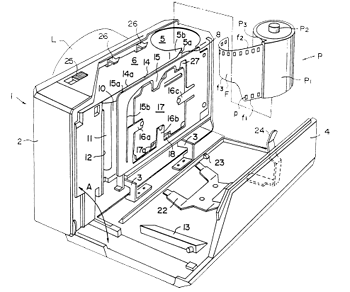 |
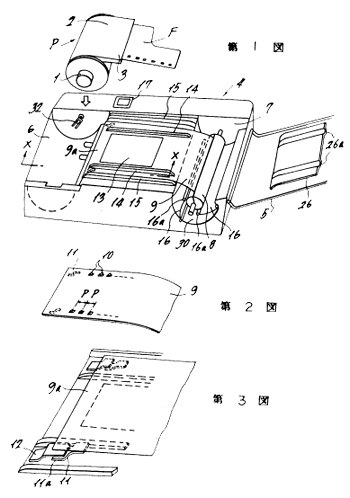 |
| Patent No. JPS5868730 relates to the film guiding in easy loading and was issued in 1983. | Patent No. JPS57169736 pertains to the easy loading system and was granted in 1982. |
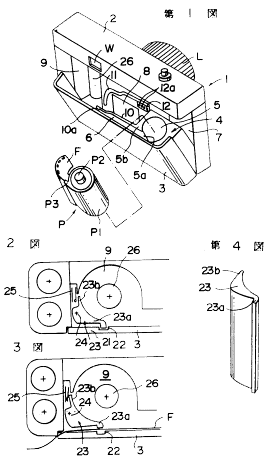 |
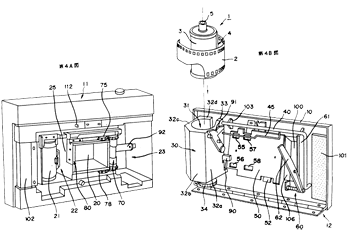 |
| Patent No. JPS57201221 is associated with the easy loading system and was granted in 1982. | Patent No. JPS5870218 is related to loading in the back and was granted in 1983. |
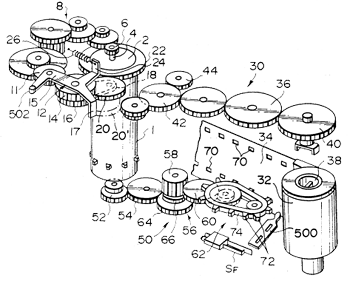 |
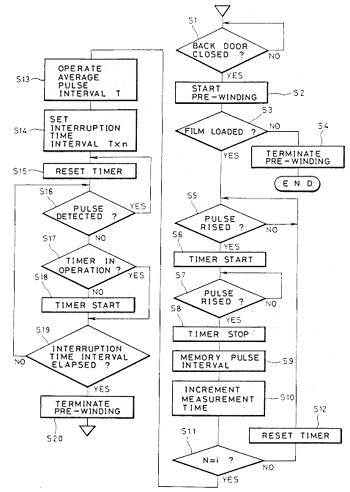 |
| Patent No. US4586801, granted in 1986, is associated with the prewinding process. | Patent No. US4885599 Algorithm for Pre-winding (1989) |
The patents related to prewinding are subsequent to those for the facilitated loading by a few years.
Interesting links or bibliography :
Add a link or element of bibliography, a picture taken with this camera, a picture of box or an ads about this camera
Your photos taken with the same camera:
Cameras from Ebay France (Fujica) (Uploaded each 3 hours)








